If you are a fan of Pyramids like me then these mind-blowing shocking facts will definitely blow your mind. These wonders are standing for around 4,500 years. So you can guess how well these structures are constructed. These monumental structures served as tombs for pharaohs. The Great Pyramid of Giza, the most iconic, is composed of approximately 2.3 million limestone blocks, each weighing an average of 2.5 tons. Unless you personally see them you can’t believe how much precision has in their designs. These structures truly showcased the architectural advanced knowledge of ancient Egyptians. Let’s uncover the mystique surrounding these colossal structures, bridging the gap between the past and the present.
Not All the Pyramids are Pointed
It is commonly believed that all the pyramids are Pointed but its not completely true, pyramids were designed in several different shapes. Actually, the Great Pyramid of Giza is truly Pointed and as it belongs form the world’s seven wonders, so it’s the most popular one that’s why people started to believe that all pyramids are Pointed. Beyond the famed Giza pyramids, Egypt boasts equally interesting structures, such as the unique “stepped pyramids.” It was the earliest pyramids. Built around 4,700 years ago, situated in Saqqara. It is a tomb for King Djoser. Unlike the pointed Giza pyramids, Djoser’s pyramid has stepped sides and a flat top. Initially conceived as a mastaba—a flat-roofed tomb with sloping sides—this architectural marvel evolved mysteriously into a 197-foot-high step pyramid. Saqqara’s stepped design represents a fascinating departure from conventional pyramid shapes, providing insight into the evolving techniques and inspirations that shaped ancient Egyptian burial monuments. Step pyramid was designed by pharaoh Djoser’s minister Imhotep. He was later worshipped as God.
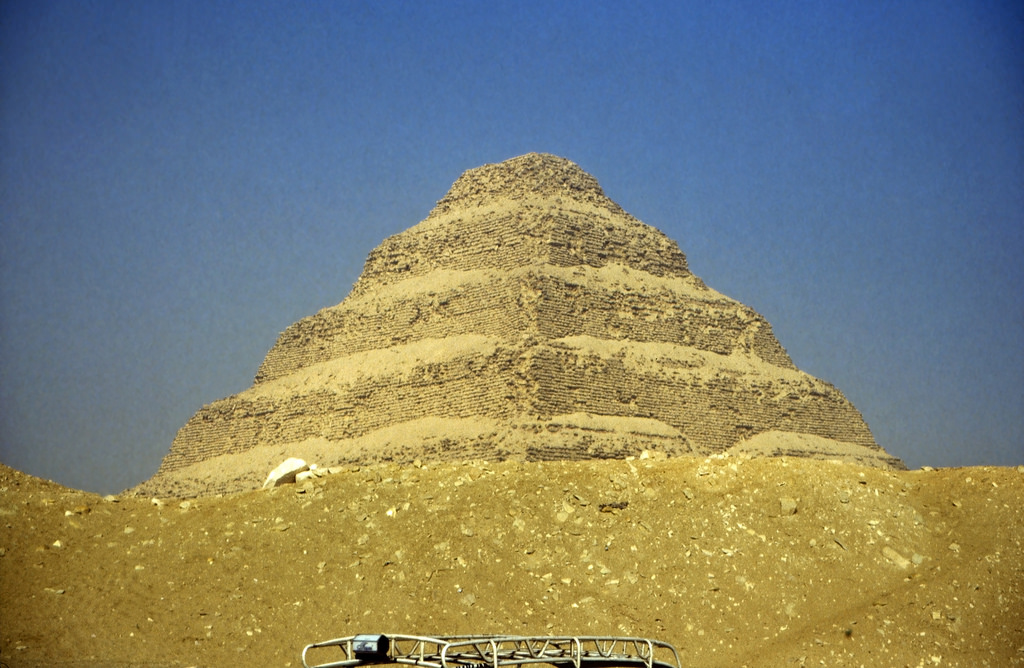
Step Pyramid Architect Later Worshipped as God
Imhotep, a pioneering figure in ancient history, was not only a master architect responsible for Djoser’s step pyramid but also a polymath with diverse talents encompassing medicine, astronomy, and mysticism. Serving as Djoser’s minister, Imhotep’s genius extended beyond architectural prowess. His multifaceted abilities elevated him to deity status, revered as the God of Medicine. The transition from esteemed architect to divine figure underscores the profound impact Imhotep had on Egyptian society, solidifying his legacy as a revered intellect and a revered spiritual figure.
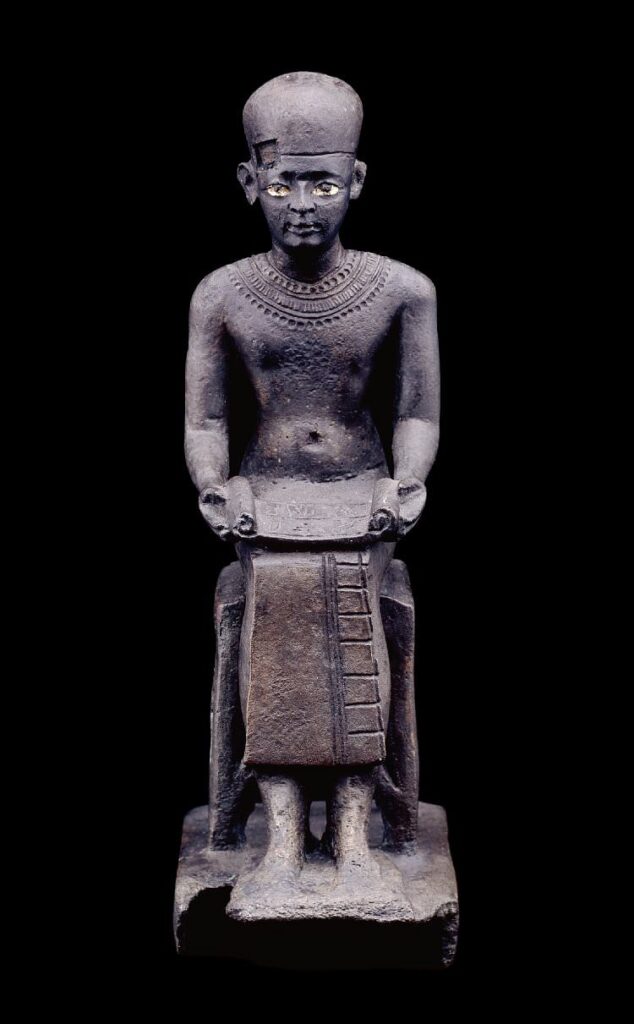
Pyramids was Tried to Demolished
During the 12th century, Sultan Al-Aziz Uthman, the son of Saladin and ruler of Egypt, aimed to demolish the Giza pyramids, beginning with Menkaure’s. Despite eight months of extensive efforts and considerable expense, progress was minimal, leading to the abandonment of the ambitious project. The futile attempt at destruction did, however, result in a substantial gash on one side of Menkaure’s pyramid, a lasting scar on the ancient structure that stands as a testament to the resilience of these enduring architectural marvels against even the most determined acts of vandalism.
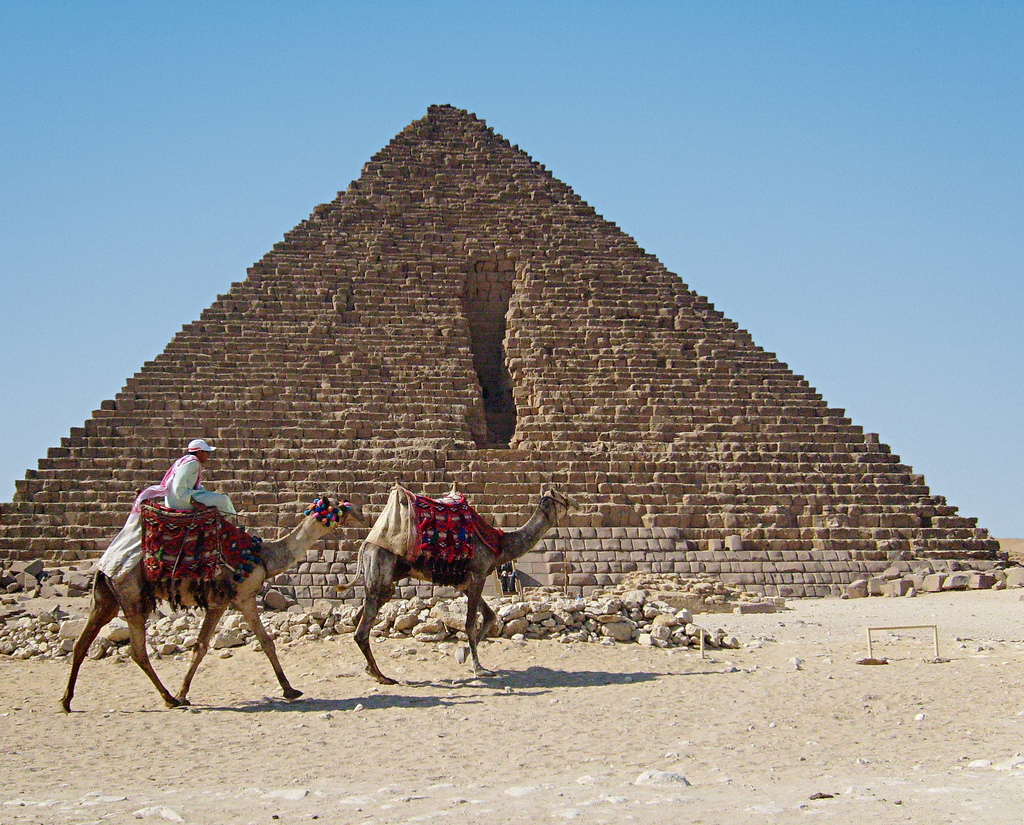
Do Pyramids take decades to Build?
Constructing a pyramid, especially one of the magnitude of the Great Pyramid of Giza, was an immense endeavor. Surprisingly, it’s estimated that this monumental task took a mere 23 years. To contextualize, the iconic Notre Dame took almost 200 years to complete. Yes, the tomb of Pharaoh Khufu, the Great Pyramid of Giza, was constructed around 2589 BC and took an estimated 23 years to complete. Considering the monumental height of 481 feet, it’s noteworthy that such an architectural marvel was accomplished without any modern technology. Indeed, the ability to erect this structure during that era is commendable. It is for these reasons that the Great Pyramid of Giza earned recognition as one of the Seven Wonders of the Earth.

Not All Pyramids are Well Constructed
Ancient Egyptians built many pyramids, not all have survived intact to the current day. The Great Pyramid and others at Giza survived because the Ancient Egyptians improved their pyramid-building skills. In earlier pyramids, they struggled to cut stones accurately, leaving loose joints. Over time, moisture seeped into these joints, causing stones to shift and erode. The Great Pyramid, however, used granite that doesn’t soak up water. Craftsmen also mastered creating tight joints in the pyramid’s casing, allowing it to shed water instead of absorbing it. These advancements protected the Great Pyramid from the weather, ensuring its remarkable preservation compared to earlier, less precisely built pyramids.

Pyramids Hold Secrets
It was previously believed that the pyramids might contain secret chambers, a notion supported by evidence found in 2011. Yes, there are secret chambers in the pyramids, although conclusive proof is lacking. While the pyramids are generally open to the public, certain chambers still hold secrets. In one pyramid, there’s a door weighing 20,000 kg that cannot be opened from the outside—it can only be accessed from within the pyramid.
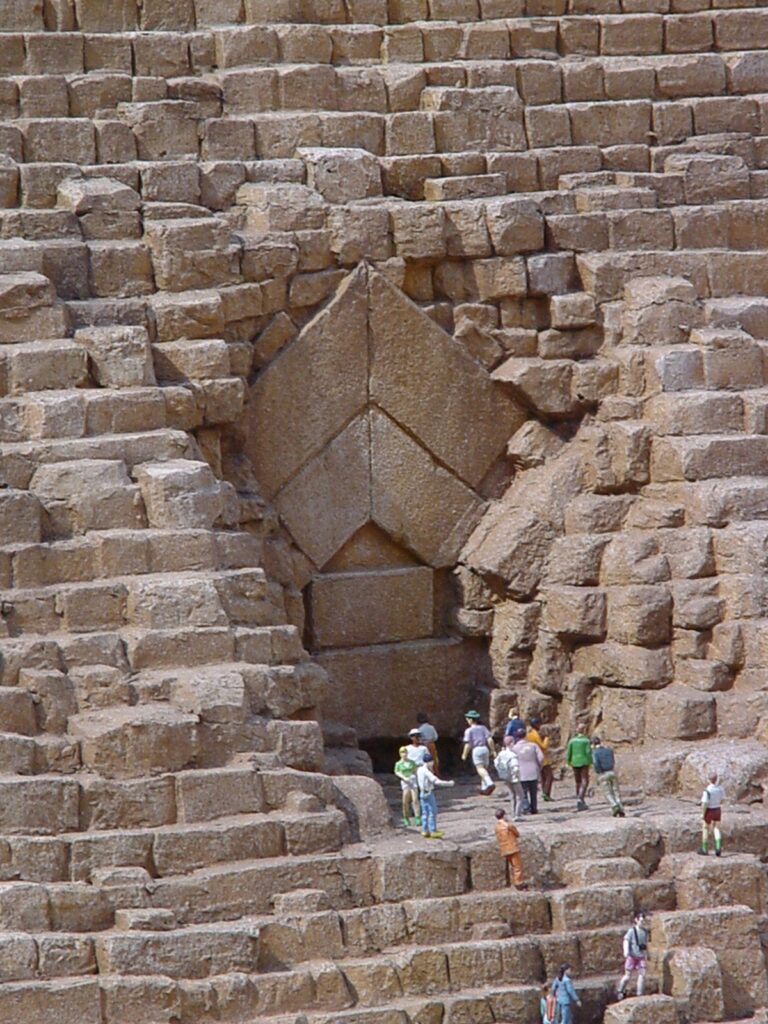
There are three main rooms in the pyramids—the Queen’s Chamber, the Grand Gallery, and the King’s Chamber. Egyptologists recently discovered two tunnels, each 20cm wide, extending from the north and south walls of the Queen’s Chamber. At the dead end, there’s a stone door with a copper handle, suggesting a possible pathway to a secret chamber.
The Geometry of Pyramids is Perfect
It’s astonishing that the ancient Egyptians, lacking a compass, aligned the Great Pyramid of Giza precisely with the Cardinal Points. The pyramid’s sides align with Earth’s North, South, East, and West directions. The north side faces true north, the south side faces south, the east side aligns with the east, and the west side aligns with west. They likely used a Gnomon, a tool indicating direction based on the sun’s alignment, though the exact method remains uncertain.
The Great Pyramid, functioning somewhat like a sundial, was strategically placed without proper equipment to cast shadows that accurately indicate time. Its geometry, aligned with star positions, reflects a remarkable precision, with an error of just 0.05 degrees according to historical estimates.
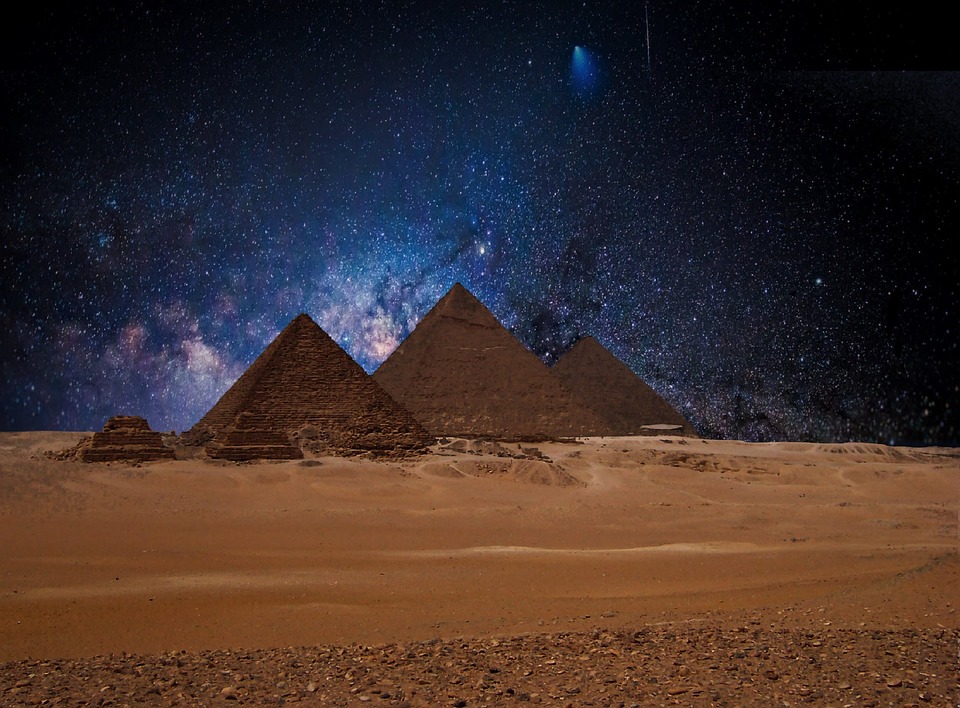
Great Pyramid was Shined as Diamond
Historians believe that at one point, the Great Pyramid of Giza sparkled like a diamond, as it was originally covered with polished limestone blocks during its construction. When sunlight hit these blocks, the pyramid’s brilliance was so intense that it could be seen from miles away. However, over time, these limestone blocks were removed and repurposed in other building projects.
The mystery deepens as to how the pyramids were built without proper equipment. Each stone weighed roughly 2.5 to 10 tons, exceeding the weight of an elephant, and considering that an average of 2 million stones were used in a pyramid, the logistics of transporting and placing these massive stones remain an unsolved puzzle. The methods of carrying and positioning these stones, a task of monumental proportions, continue to elude our understanding.
Who Build Pyramids are not Slaves
Contrary to what many believe, those who built the pyramids were not slaves, including Israelites. Recent research, supported by discoveries from that era, suggests that workers were actually well-paid and well-fed. The workforce, along with the necessary resources, likely came from various parts of Egypt. Moreover, building the pyramids was seen as a prestigious job, and many workers were honored with burial in tombs near these sacred structures.

Ancient Egyptians Construction Tools Were Amazing
Pharaoh Khafre’s burial box, called a sarcophagus, is an amazing work of craftsmanship. It’s made from black granite, and carving and shaping it must have needed great skill and special tools. Some people think the ancient Egyptians might have used saws with cutting points made from precious gems like beryl, topaz, chrysoberyl, corundum, or sapphire. But, most likely, they used tools made of bronze for this impressive job.

Great Pyramid of Giza Unbelievable Construction Cost
If a construction like the Great Pyramid of Giza were undertaken today, it would cost around 1 billion dollars, whereas the construction cost of the Burj Khalifa was 1.5 billion dollars.
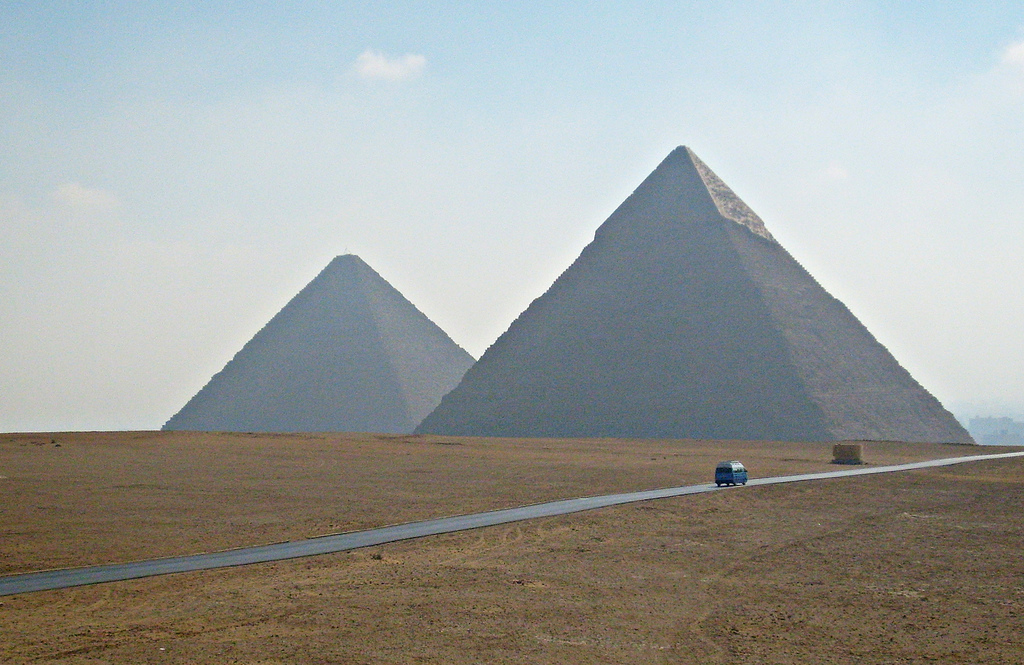
In the Concluding Lines…
In conclusion, the mysteries surrounding the Egyptian pyramids persist, from precise alignments to intricate construction techniques. Contrary to misconceptions, the builders were likely well-compensated, not slaves. The Great Pyramid’s polished limestone brilliance and the black granite craftsmanship of Khafre’s sarcophagus add layers to their enigma. Modern estimations hint at the immense cost of replicating such structures today, underscoring the timeless allure and unanswered questions that shroud these architectural marvels.
